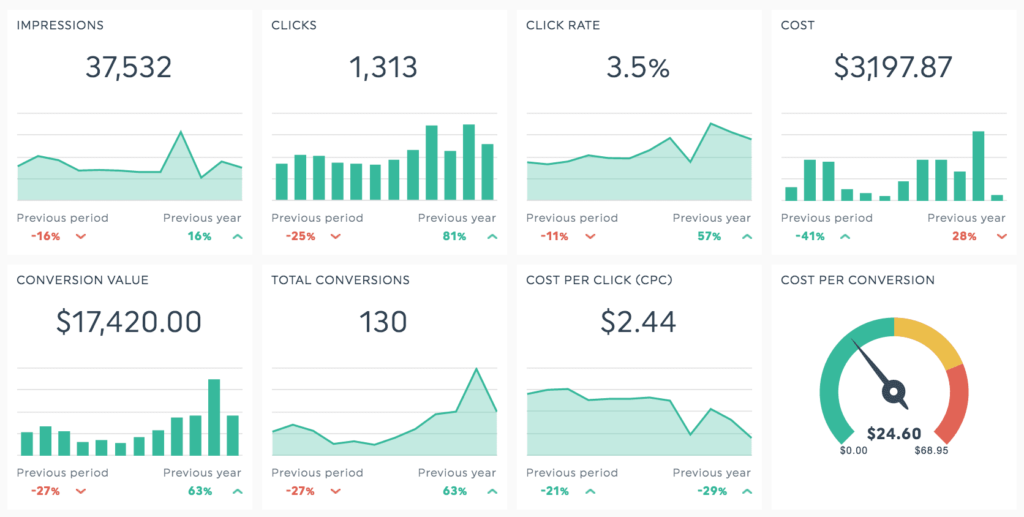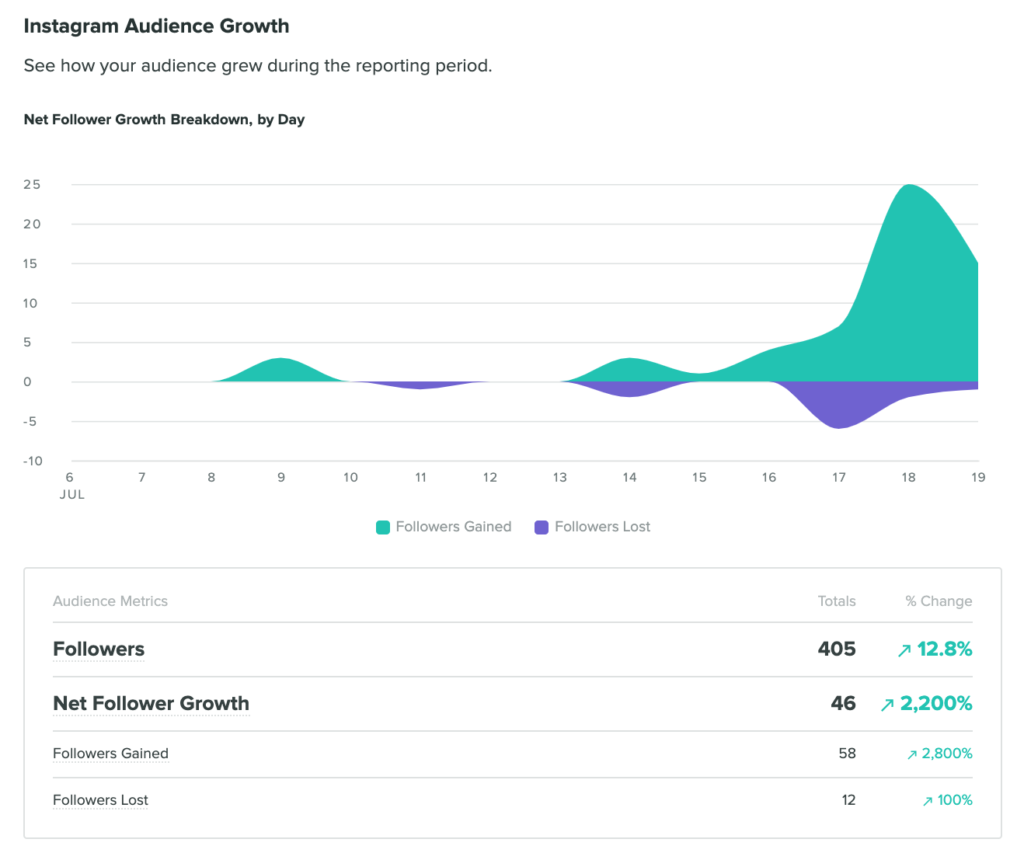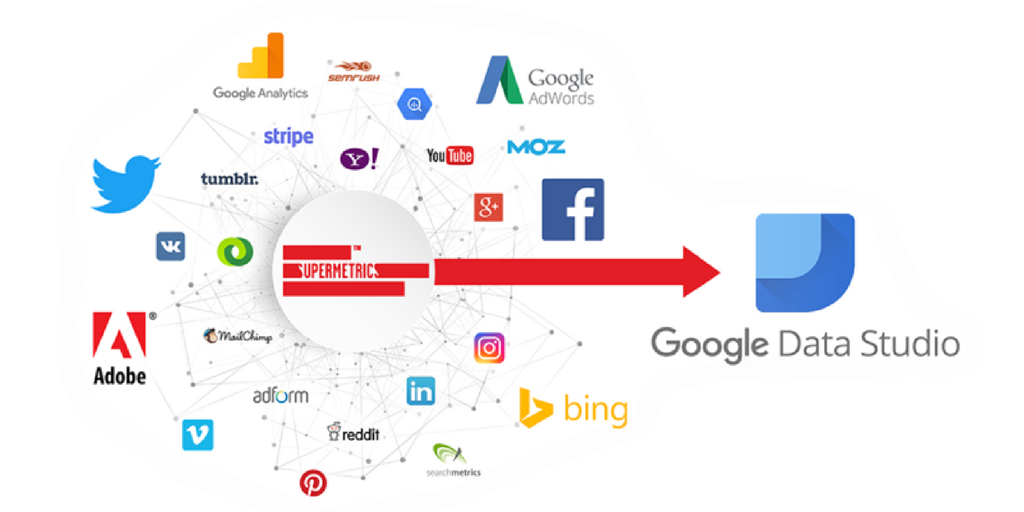Social Media KPIs Every Marketer Should Measure
Disclaimer: This article contains affiliate links to products we use and recommend, and we receive a commission for purchases made through these links.
If your role includes a specialization in social media marketing, then you may be familiar with this scenario: you spend three hours finding the perfect props, lighting, and angles for an Instagram photo while your coworkers glare over their monitors in your direction. Then you spend a couple of hours devising the perfect caption, deciding on the exact day and time the post should go live, and confirming it matches your brand’s overall page aesthetic.
Much to your glaring coworkers’ chagrin, you then scroll heavily through engagements the post receives, smiling as you interact with potential customers because your brand’s social post was a success once again.
But how can you prove the success of this form of marketing to those who doubt the value of brand presence on social media channels? That’s where a solid understanding of KPIs (or Key Performance Indicators) can be so important.
Social media KPIs prove the ROI for brands by providing measurable data metrics that can be used to set goals and track performance over time. In companies where data is prized as the ultimate source of decision-making processes, KPIs are an essential tool for placing importance in the social media channel of marketing campaigns.
How to Determine Which KPIs Should Matter
Choosing which KPIs to focus on depends on the goals of your brand and which social media channels it utilizes. KPIs should be used as a dynamic barometer for success and should be adjusted for different campaigns and goals.
Use these steps to decide which KPIs will help you effectively track social media efforts:
- Define the objective of the KPI. Each KPI should contribute to a specific campaign or overarching business goal. Consider how the KPI fits into the strategy at play. For example, maybe your business would like to increase the number of people who set eyes on the campaign (also known as impressions or views). In this example, the objective is brand awareness. Other KPI objectives include social media engagement, conversions, and metrics related to customer satisfaction.
- Evaluate the KPI’s current performance. Collecting data relevant to the KPIs you will be tracking is important because it creates opportunities for objective goal success at the end of the campaign. To create goals, brands should understand what they can achieve already and set KPIs based on attainable change.
- Include KPI tracking in your campaign strategy. As campaigns are executed over time, decide how often KPIs will be monitored. Perhaps you will be noting KPIs after every new post on Facebook or will only be looking at overall KPIs once a month. Once you decide the cadence of data reporting, make sure it is included within the campaign strategy. The more often KPIs are tracked, the sooner marketers can identify patterns and react to unwanted changes in results.
- Review, evaluate, and adjust. Why you settle on a KPI can change as the goals of the brand change, so evaluate KPIs consistently to make sure they remain relevant. Adjust as needed!
Social Media KPIs by Platform
Facebook KPIs
For brand awareness objectives, brands should set KPIs for impressions, reach, video engagement and retention, and follower growth. Conversion objectives can be measured by click-through rate, cost per conversion, and conversion rate. Follower demographic information is also made available in Facebook insights, which can help set target audiences for future campaigns.
Instagram KPIs
Instagram follower growth or shrinkage can demonstrate how paid ads or organic posts are being received. The engagement rate on Instagram is measured by likes, comments, saves, shares, story replies, and profile clicks. Some brands may find more value in the engagements per follower metric which measures engagement relative to follower count. This is an important one to evaluate when selecting content creators for an influencer marketing campaign.
Reach is a valuable metric that gives marketers an idea of how many people are seeing their content. Other KPIs that can be tracked using reporting tools include hashtag performance, referral traffic, and Stories skips.
Pinterest KPIs
Using Pinterest for business can be a huge traffic generator for brands, especially those in more visual and home development-related industries. Pinterest KPIs include more general metrics such as impressions and Saves (aka Repins). It also provides total audience (total number of unique viewers who saw the Pin), engaged audience (number of people who engaged with the Pin), outbound clicks, and new followers attracted (the number of people who followed your brand after seeing a specific Pin).
Pinterest reporting offers in-depth audience insights including standard demographics as well as information about specific categories, interests, and affinities.
Twitter KPIs
Track Twitter engagement with clicks, retweets, replies, and branded hashtag uses, as well as engagement rate which measures the performance of specific Tweets and your brand’s page overall. Follower growth and engaged follower growth can both be tracked as Twitter KPIs. Finally, track conversions or sales from Tweets and Twitter Ads for a direct measure of ROI.
LinkedIn KPIs
LinkedIn allows brands to track their number of followers, their followers’ demographics, impressions and reach, engagement rate, company update reception, viewer information, network growth, and post engagements. KPIs can be developed from goals in any of these categories.
Social Media KPI Tracking Tools
Choosing a tool to keep track of and visualize KPIs is just as important as defining them in the first place, and we’ve listed some of our team’s preferred platforms below.
Sprout Social
Sprout Social is an all-in-one social media management platform that makes it easy to define the real business value from social media. Sprout has tools for listening to and understanding audiences, engagement, post publishing, and in-depth analytics.
Supermetrics and Data Studio
At Crimson Park Digital, we like to combine the power of beautiful data reports in Data Studio with the data connectors that Supermetrics provides. Supermetrics is a powerful tool for compiling all marketing data into clean reports. Automation from Supermetrics combined with the design capabilities of Data Studio dashboards creates digestible KPI insights our clients count on when making marketing decisions.
Call Tracking Metrics
Web forms are pretty standard in terms of a digital marketing conversion action, but phone calls can actually make up quite a bit of your conversion volume from social media efforts. Without the post-click method of tracking source attribution like web forms have, call tracking is essential for better data visibility, lending itself to additional social media performance KPIs.
Our preferred platform to manage this is Call Tracking Metrics, which not only allows you to create and assign marketing phone numbers by campaign or channel but also offers text messaging campaign management and phone call recordings with transcripts.
Learn more about how we can help develop your brand’s social media presence by creating KPIs personalized to your goals as a technical project or schedule a consultation with us!
Frequently Asked Questions
What are the top KPIs for social media?
Impressions, clicks, click-through rate, cost, conversions, cost per click, and cost per conversion are the most commonly tracked metrics in social media. Each platform has its own specific metrics and reported KPIs should always correspond to the marketing goals.
How do you measure social media success?
Social media success can be measured by tracking specific metrics over time. Certain tools such as Data Studio, Sprout Social, and Google Analytics can all provide insights on the success of campaigns on social media.



